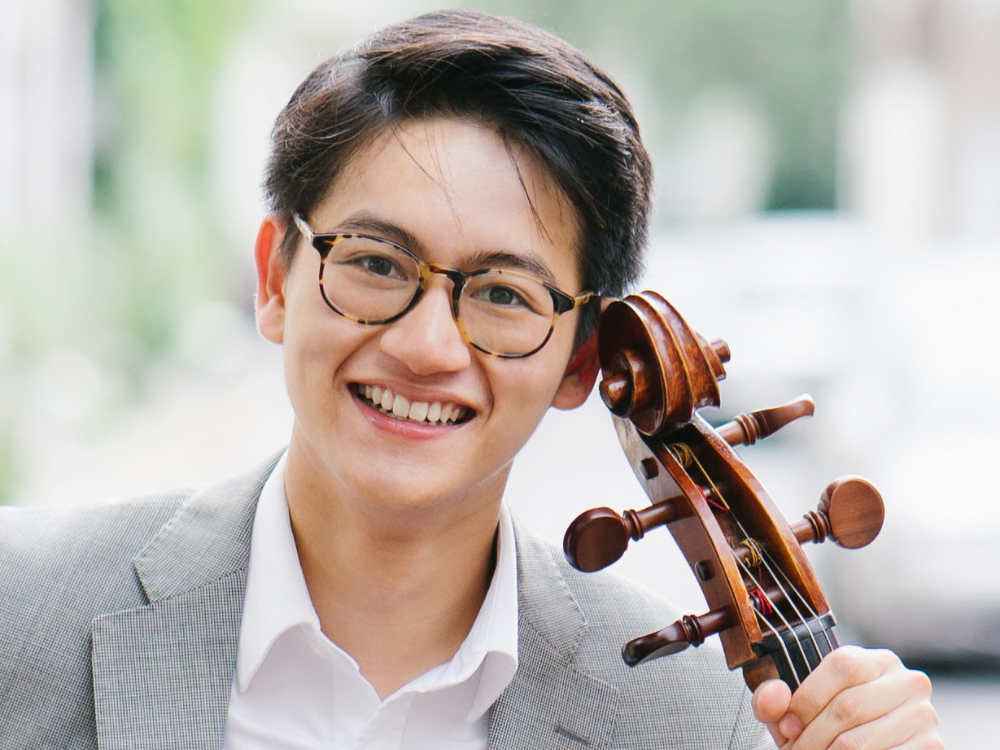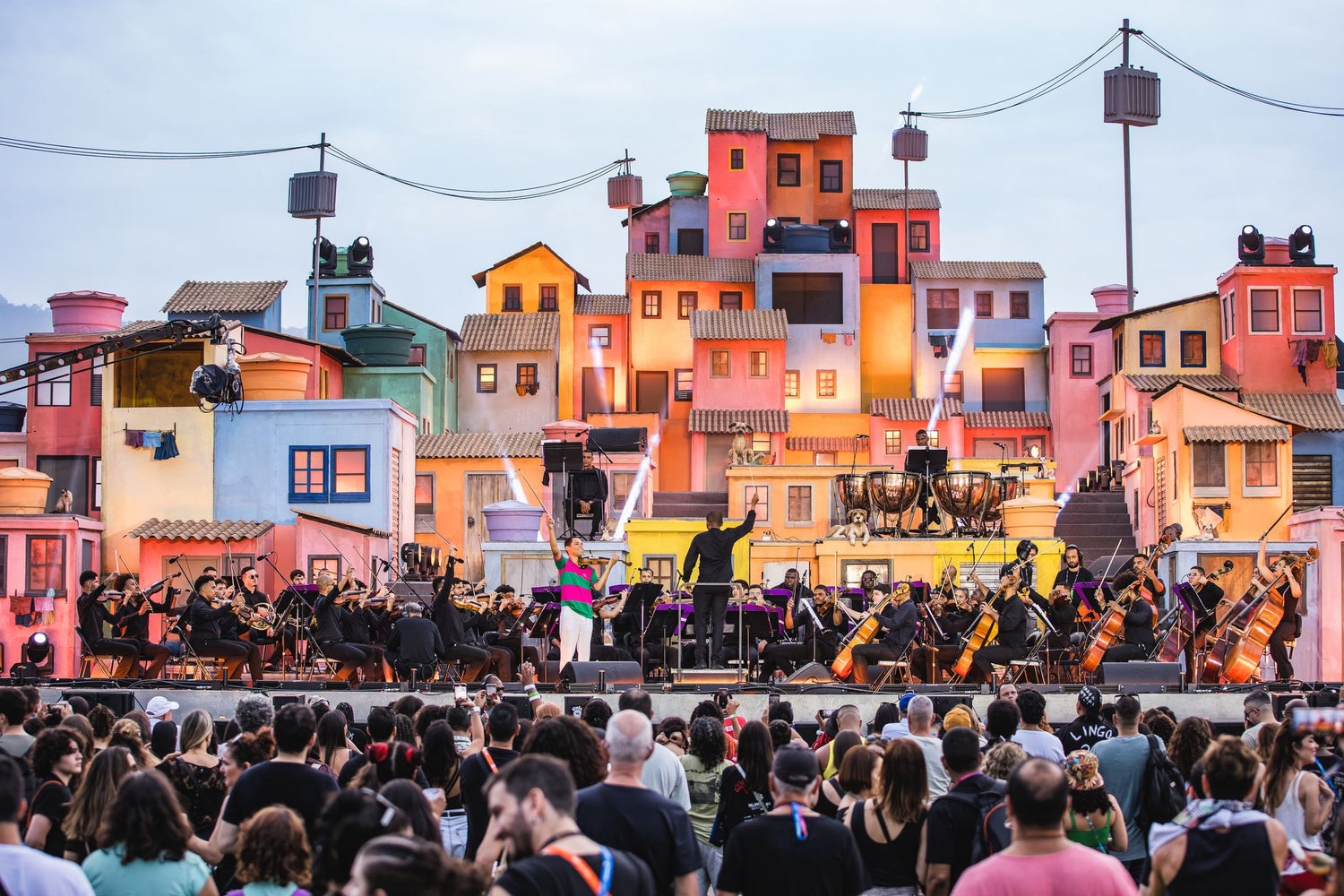When cellist Nathan Chan was born, Seattle was at the height of its grunge era. Today he’s crafting his own Seattle Sound on stage and the digital space, building a global army of music lovers one upload at a time.
By Marci Falvey
Whether you are a Beethoven purist, have Coldplay on repeat, or spend your days with video game music in the background, Nathan has something for you.
Recently we sat down with Nathan, whose infectious passion and the wisdom of someone twice his age (and the energy of someone half it) were on full display as he talked community building, riddles, responsibility and what’s next.
The start of your music career is one of the most interesting I’ve heard – one that includes Pull-Up diapers on the podium. What came first, the conductor or the cello?
You’re absolutely right, it’s a bizarre story. When I was very, very young my parents would put on these LaserDiscs of these amazing orchestras with famous conductors like Leonard Bernstein, Seiji Ozawa and Herbert von Karajan. There was something incredibly titillating about hearing and seeing the connection between physical movement and sound. I would grab a chopstick from the kitchen drawer for a baton, stand on a chair in front of the TV, and start waving my arms. I would even go to the sink to splash my face with water to emulate the sweat that I saw on the screen! It started out as a very innocent thing and manifested itself when the Assistant Conductor of the San Francisco Opera, Sara Jobin, saw me conducting from my seat at a concert when I was two. She became my conducting mentor and allowed my debut at the age of three with the San Jose Chamber Orchestra.
What made you put down the chopstick and pick up the cello?
My parents wanted to see if this was a real-deal or not, so it came time to choose an instrument. I was always intrigued by the super-low sounds of the orchestra and wanted to play the double bass. But, as a very small kid growing up, my parents recommended the cello.
So, conducting at age three, cello at age five – one might assume your life was all music all the time, but then you throw in this curve ball with an Economics degree. Why did you pursue that first and how does that background inform your art today?
Growing up, I was never that kind of guy that only did music. I had a well-rounded upbringing and, of course, cello was an important part of it, but I didn’t begin to conceptualize it as a career until late high school or early college. Around that time, I wanted an iPhone, and to prove to my parents I could pay for the monthly plan, I recorded the theme for Super Mario Bros. on my laptop and sold it on iTunes. Looking back, I wonder if that sort of connected the dots between music and a business acumen that I was really fascinated by.

You certainly bring a business savviness to your online presence and brand. With so many followers waiting for your latest video or post, what does this creative outlet mean to you and how does it fit into your goals as an artist?
My YouTube page first began as a platform for posting old recital footage. What really made the gears turn was when my youth symphony friend and I recorded that same Super Mario Bros. theme song and uploaded it. It did really well and showed me that crafting music for that medium was something that was really effective and could bring music to a wider audience than just physically in a concert hall. Seeing comments from around the world gives you this global perspective that classical music is this really cool thing, if you portray it in the right light and give it the platform it really deserves. I’ve been asked before if what I do online actually helps classical music, and what I believe is fun is reaching those on the fringe of classical music and inviting them to take one step deeper into the circle, where there are amazing experiences you can have. My goal is to be super accessible with the music I create and form a perspective that I create music for You. That’s the driving force behind everything I do.
" what I believe is fun is reaching those on the fringe of classical music and inviting them to take one step deeper into the circle "
What YouTube artists have inspired you?
This is a Renaissance for classical musicians, who are doing many amazing things on YouTube. The first channel I really enjoyed watching is 2CELLOS – Croatian cellists who are incredible classical musicians in their own right, but formed this cello duo group that performs pop music and can absolutely shred on classical too. I really appreciate what they do, because they don’t compromise on the quality of their playing in any way. There’s also contemporary classical musicians like Ray Chen, Kian Soltani and Pablo Ferrández who are really bringing classical music and cello to life. With all these artists inspiring people online, young musicians don’t have to be in a bubble. They have this incredible community to connect with and that makes what they do very relevant.
If you could collaborate with any YouTube artist, who would it be?
I’d love to collaborate with TwoSetViolin. They are Australian violinists who are a modern-day Victor Borge. They are incredibly funny and self-aware about the lives of classical musicians. It makes what we do seem not so foreign, in fact approachable.
" Really lean into your quirkiness and your personality strengths. "
What is your advice for others wishing to go viral on tambourine?
Really lean into your quirkiness and your personality strengths. A lot of what makes us who we are, are those weird things around the edges, and I certainly try to lean into them. Instead of trying to dilute what you have and who you are, amplify it. Be yourself and don’t be afraid to share it online, because there is an incredible community out there that is willing to support you.
Away from the camera, you perform in the Seattle Symphony. What responsibility do you feel sitting in that chair?
What I’ve really come to appreciate and lean into is the power of working with large organizations. As an individual, you have this mobility, but not necessarily this team of amazing people that are there to support you. I’ve learned to cultivate relationships with those who have different roles in our industry and learn their different perspectives. We are all here to drive classical music forward, but our motivations are different.
Seattle Symphony isn’t encumbered by tradition, which allows us to take greater risks in the musical world—which I love. I try to collaborate with all the Symphony’s decision-makers as much as possible to drive that forward, because we’re in a unique role and place to do that.
Next month you’ll present a recital at the Symphony’s new innovative performance space Octave 9. What will you do if you look out and see a two-year-old conducting along, like you were a mere 23 years ago?
I’d definitely reach out to the child and parents, making it evident that what they’re doing now affected my life profoundly. With this busy and complicated world we live in, we’re pulled in so many different ways and sometimes art gets blindsided, but there is immense value in that deeper emotional sense of feeling and belonging that not many fields can compare to.
You’ve done a lifetime worth of accomplishments in your first 25 years. What’s on tap for the next 25?
I’ve always been fascinated by a type of role, where you’re not only a performer, but also an ambassador to the art. I’d like to continue this either through the internet or speaking about where music is headed. It could be in a tangible way as a conductor, or as a thought leader. In the meantime, I’ll just keep practicing and getting better at the cello.
How did you learn about Coregami and what shirts do you wear?
My colleague in the Seattle Symphony, Second Violinist Andy Liang, highly, highly recommended Coregami to me. I took the plunge, ordering two—the Bernstein and the Coltrane—and I’m so glad I did. I don’t have to worry about it wrinkling or having to spend a lot of money on dry cleaning.
" Coregami’s shirts are made to last longer, exponentially allowing for greater use and more flexibility of my time without those trips to the cleaners "
How do these shirts change your game?
I Love not having to wear an undershirt and the material is super comfortable. I’ve made some custom shirts in the past, and the durability was not so good. Coregami’s shirts are made to last longer, exponentially allowing for greater use and more flexibility of my time without those trips to the cleaners. Tomorrow will be my first time flying with them, and I’m excited to not have to worry about ironing once I get to my hotel room. It’s a great invention that helps not only musicians and artists, but professionals in all fields. Thank you to Kevin for all of his hard work. I hope Coregami continues to grow.

ABOUT NATHAN CHEN
Nathan Chan was named a 2012 Davidson Fellow for his project entitled, "The Importance of Passion” and was awarded a $25,000 scholarship as part of this prestigious honor.
While in New York City, he made his debut in Avery Fisher Hall (now David Geffen Hall) playing Haydn's Cello Concerto in C Major and with the Juilliard Orchestra performing Strauss' Don Quixote as the winner of the 2013 Juilliard Cello Concerto Competition, led by Maestro Leonard Slatkin. In 2015, Mr. Chan was chosen to participate in Classe d'Excellence du Violoncelle with world-renowned cellist Gautier Capuçon in association with Fondation Louis Vuitton in Paris, France. Nathan won the 2015 Aspen Low Strings Concerto Competition playing Haydn’s Cello Concerto in D Major and was a recipient of the 2016 Samuel Mayes Memorial Cello Award at Tanglewood.
Nathan is a strong proponent of using technology and media to attract others into the classical world and is committed to his fast growing Internet presence; to date, he has over 7 million views on YouTube. He recently joined the Seattle Symphony as their new Assistant Principal Cello.
Nathan received his Bachelor of Arts Degree in Economics at Columbia University and his Masters of Music with Richard Aaron at The Juilliard School.






